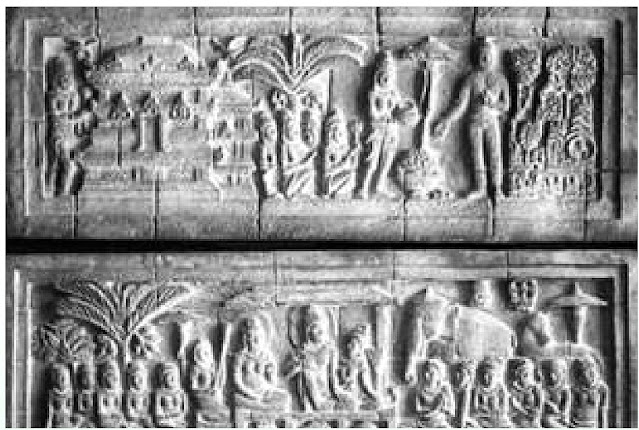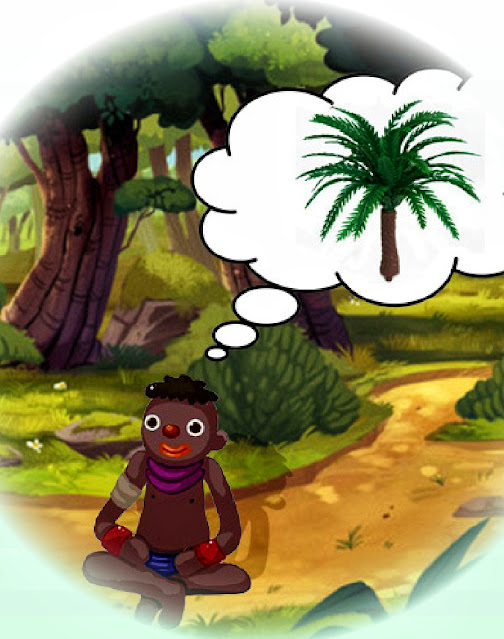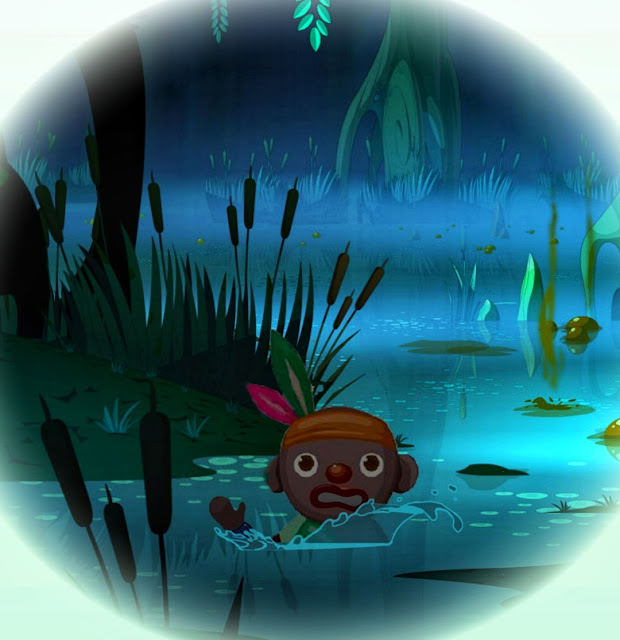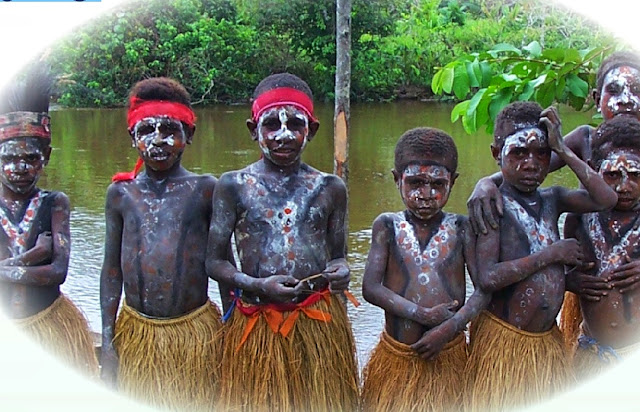Sago trees reliefs
Do you know my friend? That in the reliefs of Borobudur temple sago trees are also carved, in addition to 3 other palm trees, namely palm, sugar palm, and palm. How could that be? Whereas the Borobudur temple, which was built in the 8th century during the Syailendra dynasty, is located in Java, where almost all of the population now eats rice.
According to experts, it is possible that in ancient times sago was the food of native Indonesians. Just listen when the Javanese say rice is sego, while the Sundanese say sangu. It can occur in the same root as sago.
Meanwhile, some staple foods that we know, such as rice, sweet potatoes, potatoes, cassava, and corn, come from outside Indonesia. Rice, for example, comes from India, corn comes from Mexico.
Meanwhile, sweet potatoes, cassava, and potatoes come from South America.
 |
| Reliefs of Borobudur Temple (Karmawibhangga) |
After seeing the reliefs of Borobudur Temple, the root of the language, and the original area where sago comes from, there are experts who argue that ancient Buddhist kings and their people ate sago too. However, stories and legends about the origin of sago are more developed from outside Java.
Unlike the folklore about the origin of rice as the incarnation of the famous Dewi Sri in Java. Folklore about sago more popular comes from Papua, Maluku, Sulawesi, and Sumatra. One of the folklores about the origin of sago is from Papua, namely Biwiripits from Asmat.
Folklore about sago from Papua
Come on guys, let's read together. Once upon a time, there lived a valiant young man named Biwiripits and his wife, Teweraut, on the banks of the Pets River. They both live together with their extended family and siblings.
They live by hunting and looking for food in the forest. Their daily food is fish, karaka (swamp crab), nipah shoots, and nipah fruit. One morning Biwiripits woke up from his sleep.
He felt something strange about his dream last night. Therefore, he kept thinking about it all day long.
In his dream Biwiripits and his wife cut the big tree. Then they both beat it, process it in the trunk of the tree, then cook it.
The food from inside the tree they prepared together turned out to be delicious. It was just a dream, but the dream really made Biwiripits always think about it because it seemed as if it was real. Therefore, he was determined to find the tree in his dream alone in the middle of the forest.
The man also kept the strange dream a secret from his wife. Because it's not the time to tell it because everything is just a dream before it becomes a reality.
Every day Biwiripits went to the forest to look for a tree like the one in his dream, but after a few days his efforts were still in vain. However, the man was not discouraged.
Day by day his determination burned more and more to find the thorn tree in his dreams until he returned home at dusk. This of course made his wife, Teweraut feel anxious about her husband's condition. When asked, Biwiripits simply said nothing.
In fact, one time when his wife was about to follow Biwiripits into the forest, the man immediately stopped her from participating. "You stay at home!" said Biwiripits loudly.
Biwiripits found sago trees
One day Biwiripits returned to the forest. Past the dense trees and shrubs, and the wet muddy ground. However, suddenly, “Ah! What's wrong with my leg?" she screamed. He felt a thorn pierce his leg.
The man returned home. However, the next morning he returned to where his leg had been pierced by a thorn. This time Biwiripits carried a taf (snapper spine) in his hand. He was sure that the thorns of the palm tree in his dream were close to him.
Therefore, the man planted the thorns of the fish he was carrying into the mud. The next day, Biwiripits returned to the forest and saw a tree standing on the thorn he had planted. The man jumped happily because the tree in front of him was the same as the tree in his dream. His dream has come true.
This is the time to tell about the tree in his dream to his whole family. Immediately Biwiripts returned home, and he asked the brothers to follow him into the forest with the equipment he needed. Biwiripits and his brothers started cutting down the thorny tree.
After falling they clean the thorns from the trunk. Then, they split the trunk and squeeze the inside of the tree trunk with water so that the juice comes out. Everything they do is in accordance with the dream instructions that Biwiripits always remembers.
The sago starch was so abundant that the Biwiripits brothers immediately collected them until their noken (fiber knitted bags) were full. Finally, Biwiripits, his wife, and his brothers returned home in the late afternoon carrying a bag full of sago flour.
In dim conditions and the road is full of mud, they all have to be careful. Moreover, there is a full load of sago starch to carry. Sometimes the wooden catwalk they stepped on also swayed a little.
Unfortunately, Biwiripits, the inventor of the thorn tree which they now carry the starch with, can't keep his balance. On one occasion climbing a log he slipped into deep mud. The forest mud made Biwiripits helpless. As if dragging him deeper into the earth when the man struggled to get out.
His hands kept reaching out to get out of the mud. The brothers and his wife were shocked. They immediately helped Biwiripits and tried to lift the man out of the sucking mud. However, their efforts were fruitless.
While it was getting darker and they were more confused when they left the forest without light. "Come back Teweraut, go home my brothers. Cook the tree starch. You have to get home before the forest is completely dark.
Leave me!" said Biwiripits. Now only the head of Biwiripits is visible from the surface of the mud. With a heavy heart, Teweraut and his brothers left Biwiripits in the middle of the forest alone. However, they promised to come the next day to pick up the man back.
The next morning the entire Biwiripits family came to pick up the man who had drowned in the mud. Unfortunately, they didn't get the Biwiripits figure. They only found many clumps of sago palms in that place.
That is the folklore about the origin of sago from the Asmat area, Papua. The message that can be drawn from this sago story is Biwiripits's self-sacrificing and tireless attitude so that his family and grandchildren can get abundant new food ingredients.
It's true, my friend, until now Papua is the area with the most sago plants in Indonesia. Mainly in coastal areas. Papuan children on the coast also grow strong and healthy because they eat sago, which is widely available in nature.




